Reviews
Buster Keaton & Clyde Bruckman
USA, 1926
Credits
Review by Timothy Sun
Posted on 24 June 2009
Source Kino International DVD
Categories Favorites: The Action Movie
One of the cornerstones of action cinema - indeed, of classical narrative cinema, in general - is the chase. Silent filmmaker D.W. Griffith, in his pioneering use of crosscutting between disparate actions with increasing frequency and intensity, is perhaps the most formative example. Griffith climaxed his films so often with this sort of “ride to the rescue,” wherein one party literally speeds to the rescue of another, that it became a trademark. Whether it be the KKK galloping toward a house under siege by blacks in The Birth of a Nation or Richard Barthelmess hurrying toward Lillian Gish trapped on an ice floe in Way Down East, a Griffith audience could count on a thrilling race to the finish, excited not only by the narrative circumstances on screen but by cinematic language itself. It did not take long for filmmakers and audiences alike to recognize the movies’ unique ability to exploit movement and action to create suspense, to make the pulse quicken. In their adrenalin-fueled impact, Griffith’s techniques laid the groundwork for much of what we still see in action cinema today: high-speed bodies in motion.
Griffith’s chases were deadly serious. They epitomized the sort of “movies are art!” ethos of the medium’s early fight for legitimacy. The flipside to Griffith’s solemnizing of cinema’s inherent penchant for kinematics is the silent comedies of Mack Sennett, Fatty Arbuckle, and, most of all, Buster Keaton. The early Sennett comedies are often continuous chases, featuring the bumbling Keystone Cops as they engage in increasingly slapstick shenanigans in pursuit of some character or other. Fatty Arbuckle brought a dash of the surreal to the proceedings, his huge girth offset by his agility and incredible special effects—Arbuckle balancing across telephone wires, for instance. These early comedies were wild, a sort of unleashed id to Griffith’s superego. Buster Keaton brought less chaos (at least, more controlled chaos), more wit, and infinitely more elegance to this style of comedy, culminating in his remarkable, nearly unmatched run of features in the 1920’s.
Long overshadowed by Chaplin, both in his time and after, Keaton was rediscovered during the boom of post-war cinema culture that swept the world and has increasingly grown in stature ever since. The eternal debate over who was better, Chaplin or Keaton, will never be resolved, but it is easy to see why Keaton has emerged in some circles as the superior filmmaker. His films are more formally well-constructed, particularly in their narrative forward momentum; whereas Chaplin’s features are somewhat episodic, going from gag set-piece to gag set-piece (see especially City Lights or the famous “roll dance” from The Gold Rush), Keaton’s are more story-driven. The gags arise from the situation and Keaton does not so much perform for the audience, as Chaplin does, as simply react to the circumstances on screen. The technical intricacy of his films also arguably outpaces Chaplin’s. Certainly the stunts he performs are more jaw dropping than anything the Little Tramp does - racing boulders down a mountain in Seven Chances, swinging over a waterfall in Our Hospitality, standing just under the window of a house’s façade as it falls on top of him in Steamboat Bill, Jr. 1 Further, Keaton’s humor is more in line with our culture of irony and therefore somewhat less dated than Chaplin’s. Known as “The Great Stone Face” for his unchanging expression throughout all of his films, Keaton’s characters often seem slightly bemused by their fates—they all carry with them a sort of existential shrug. While his films usually pivot around some sort of romance, Keaton never indulges in sentiment the way Chaplin does. If anything, he undercuts the romance, never more brutally - and hilariously - than in the epilogue of College, in which, after finally winning the girl, he fast-forwards with a few quick cuts through the rest of the couple’s life, from initial love to middle-aged annoyance to, finally, two gravestones next to each other. In The General, after saving his girl from the enemy’s clutches, he finds that she’s more nuisance than help. After he tells her to keep throwing wood into the engine, she picks up a tiny stick and tosses it in. Keaton stares for a beat, picks up a wood chip and hands it to her. She tosses that in too, without registering the sarcasm. Then, in one motion, Keaton grabs her throat and shakes her, before planting a kiss on her lips. Keaton’s underdog hero is never the saintly, happy-go-lucky romantic that the Little Tramp is—he is, instead, the hardworking everyman dropped into extreme circumstances who, with common sense, some luck and ridiculous physical ability, rises to the occasion, only to stare back, unmoved.
Keaton’s worldview made him uniquely suited to making a movie like The General, an action-comedy-war epic about the most traumatic war the country has fought, that between North and South. Who but Keaton could’ve turned an entire artillery squad getting sniped to death around him into a knee-slapper? Based on a true story, the film is really one long chase sequence, punctuated by an interlude in the enemy’s camp and the final battle sequence. Keaton is a train engineer who has the misfortune of paying an amorous visit to his beloved Annabelle Lee on the day Fort Sumter is fired upon. Stirred by Southern gallantry, the men of Annabelle Lee’s family rush off to enlist, spurring her to tell the less-than-enthusiastic Keaton that unless she sees him in uniform, she never wants to talk to him again. He is refused by the army, however, because they think he will be of more use as an engineer (no on bothers to tell him this, of course). Cut to a year later, a disgraced Keaton has his engine, the titular General, stolen by Union spies and he alone is in hot pursuit. From this setup comes a breathless flow of physical and cinematic ingenuity, with Keaton creating as formally perfect a film as has ever been made.
The idea of a chase film involving trains may seem counterintuitive—trains travel on a predetermined path, after all. It’s a measure of Keaton’s genius (and his famous love of trains) that he turns this setup into a hilarious nail-biter. Tracks are switched, boxcars are set on fire, all manner of obstructions are thrown in the trains’ path, cannons are fired, even firewood for the engine is used for laughs. In a stunt that never fails to simultaneously generate laughter, gasps and applause, Keaton climbs onto the front of his train with a giant wooden rail tie and, at just the right moment, throws it down onto another rail tie left as an obstruction on the track, knocking both out of the way of his train. Mistimed, the stunt could’ve been disastrous. As it is, it’s all in another day’s work for Keaton’s matter-of-fact virtuosity.
As befits his philosophical outlook, much of Keaton’s humor, particularly in The General, is predicated on misdirection. Many of his actions bring about entirely unintended consequences, whether for good or bad. Moreover, Keaton shoots scenes so that his character is in the least privileged position—the audience usually knows more about what’s happening around the character than he does himself. Much like in horror movies, where the monster/killer sneaks up from behind while the audience squirms, Keaton graces the audience with the master gaze while his character is focused only on what is immediately in front of him. With the aforementioned firewood, for instance, Keaton stops the train to gather wood from the side of the tracks and tosses them back onto his train. Only he not only misses the cargo box of his train entirely, he knocks down the few pieces of wood he did manage to throw up. His back is turned to these events, though, so the audience guffaws while he tirelessly continues with his misbegotten strategy. When the Union soldiers unhitch a boxcar onto the track to obstruct Keaton’s engine, Keaton smartly pushes the boxcar onto a fork in the track while he directs his own engine onto the other track. In an ingenious high angle shot, however, the audience see the forked tracks coming back together, bringing the discarded boxcar right back in front of Keaton’s engine, where it started. Keaton, meanwhile has been busying himself with loading more wood into the engine and does not see the converging tracks. By the time he does turn back toward the track, the boxcar is already back in front of him. The camera holds on Keaton’s reaction shot, which, characteristically, is underplayed—he merely stares ahead, widening then closing his eyes in his version of bewilderment. Shots like these are the Kuleshov Effect put into practice—even if an actor shows no emotion, the audience will determine his thoughts or feelings based on what is intercut with his face: a bowl of soup, for instance, gives the audience the impression that the actor is hungry. Keaton places enormous trust in his audience this way and it pays off with far more laughs than a typically overacted double-take would generate.
My favorite gag in the film plays along similar lines of misdirection. Keaton has hitched a giant cannon to his train and, with apparently no idea how to use it, shoves an entire canister of gunpowder into it. He loads a cannonball, lights the fuse and climbs back toward the front of the train. He accidentally jostles the cannon car however, and the cannon slowly drops down until it is pointing straight at Keaton. The audience, of course, sees this happen before Keaton does and our laughs are intensified when we finally get Keaton’s reaction shot. Helpless, and in perfect Keaton fashion, he rushes toward the front of the train hoping to take cover but not before futilely picking up a piece of firewood and throwing it at the cannon, as if this useless act of defiance could make the cannon change its mind. While Keaton is huddling in his engine, we get a wide shot of the tracks and see that the train is entering a curve. As the train makes its turn, we see the enemy train now directly in the path of the cannon and at that moment, the cannon goes off, almost landing a direct hit on the Union spies. This, of course, leads the Union soldiers to believe they are greatly outmatched by the Confederates in pursuit. After all of this, Keaton finally emerges with no idea why he’s still alive.
Amid the flurry of stunts and laughs, it can be easy to miss how incredibly beautiful The General is. Shot on location, Keaton demonstrates that he was capable of “epic” filmmaking of the highest order. His wide shots stretch out the landscape on and on, creating several planes of mountain vistas that slowly disappear into the depth of field. The amazing tracking shots that go along the side of the various speeding trains are a sight to behold, not only for their inherent aesthetic beauty but also because of the action Keaton orchestrates within that constantly moving frame. In another classic example of misdirection, a tracking shot shows Keaton standing on the train cutting firewood with his back to the tremendous mountains and fields behind him. Unbeknownst to him, an entire Confederate army retreats through those fields, with the Union army right on their heels. The crisscrossing planes of action in this scene are a visual splendor—the foreground of the speeding train traveling right to left, with Keaton front and center, then the smaller, slower figures of the armies going left to right in the middle ground and the unmoving mountains in the background.
The visual majesty of the film reaches its climax, appropriately enough, with the climax of the film, the final battle between the Confederate and Union troops across a gorge. Hundreds of uniformed extras flood the screen, emerging almost imperceptibly out of the woods, flanked by the massive mechanical hulk of the trains. When the shooting begins, a wide shot showcases dozens of individual puffs of smoke from musket and cannon, the picturesque quality of the image rendering the actual people doing the shooting inconsequential (as is the truth in mechanized war). There is a cut to a startlingly beautiful backlit shot of anonymous soldiers making their way down the hill, rays of sunlight passing through the trees. Then, above all, there is the spectacular shot of the Union train finally meeting its end as it steams across a burning bridge and plummets into the gorge below. Said to be one of the most expensive single shots of the silent era, it rivals David Lean in its scale and grandeur.
Death, for Keaton, naturally comes as a joke. After the aforementioned artillery squad is killed off by a solitary sniper, Keaton looks more exasperated than anything else. He pulls out his (randomly found) officer’s sword to direct the next cannon team’s fire at the sniper but as he does so the blade flies off the handle and - wouldn’t you know it - impales the sniper. There is a constant undercutting of ideas of heroism in the film, most notably by Keaton’s strategy of misdirection and unintended consequences, as discussed earlier. This idea becomes more apparent in the battle scenes and its aftermath. Like the killing of the sniper, everything Keaton contributes to the course of the battle is accidental. When he captures a Union general, it’s because the guy has been unconscious in Keaton’s train for the whole movie and happens to wake up after the action has passed. When a Confederate standard bearer is shot down, Keaton picks up the flag in an exaggerated pose of valor, only to be sent flying backwards as its revealed he was standing on the back of another soldier. When, in the end, he is finally awarded his soldier’s uniform, he’s more interested in making out with Annabelle Lee than he is in even just saluting his fellow soldiers. The uniform is arbitrary, anyway. He only wanted it because it was a prerequisite for necking. Several times in the film, in fact, characters are shot at by people ostensibly on their own sides because they are wearing the wrong uniform. Uniforms, as are any ordering principals to a chaotic world, are just shells we put over ourselves to give our lives meaning. For Keaton, who grew up getting literally thrown around a vaudeville stage by his parents, thus earning him the nickname “Buster,” life is about taking hits and moving on. There is no higher calling—romance is fleeting, ideology leads to death, heroism and ineptitude are two sides of the same fateful coin, any attempt to order life is laughable. In his films, comedy mixes with action, chases give way to war and death, potentially fatal stunts are played as light as air.
A boat named “Damfino” appears in several of Keaton’s films: at first, “Damfino” is supposed to be shorthand for “Damn Fine” but after the boat meets its inevitable end and Keaton is stranded on a beach somewhere, he is asked where he is. That great stone face looks back, with mild interest, and answers, “Damfino.”
- The only cinematic figure who comes close to Keaton’s physical playfulness/mastery is, of all people, Jackie Chan, an avowed fan. ↩
More Favorites: The Action Movie
-

First Blood
1982 -
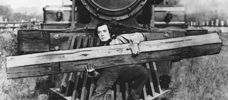
The General
1926 -
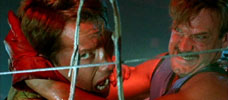
The Running Man
1987 -

Guns
1990 -

Highlander
1986 -
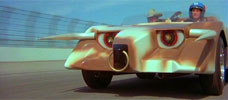
Death Race 2000
1975 -
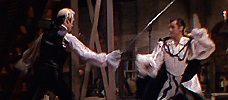
Scaramouche
1952 -
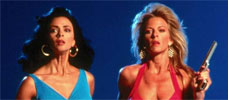
Do or Die
1991 -
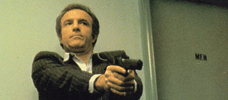
Thief
1981 -
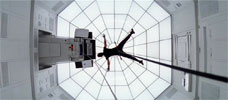
Mission: Impossible
1996 -
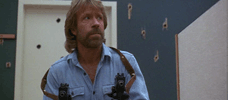
Invasion U.S.A.
1985 -

Rambo: First Blood Part II
1985 -

Bullitt
1968 -
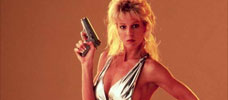
Hard Hunted
1992 -
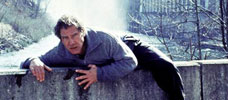
The Fugitive
1993 -
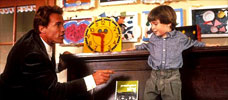
Kindergarten Cop
1990 -
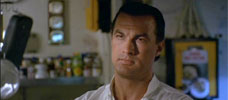
Under Siege
1992 -
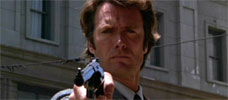
Dirty Harry
1971 -
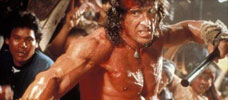
Rambo III
1988 -
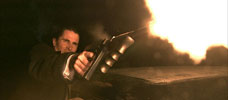
Public Enemies
2009 -
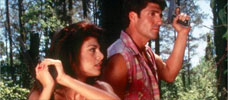
Day of the Warrior
1996 -

The Good, the Bad, the Weird
2008 -
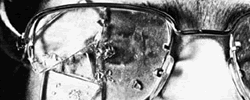
Straw Dogs
1971 -
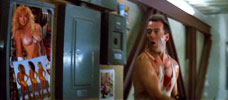
Die Hard
1988 -
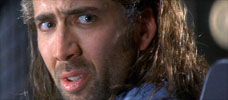
Con Air
1997 -
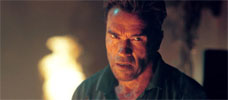
Collateral Damage
2002 -
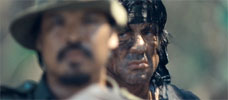
Rambo
2008
We don’t do comments anymore, but you may contact us here or find us on Twitter or Facebook.



